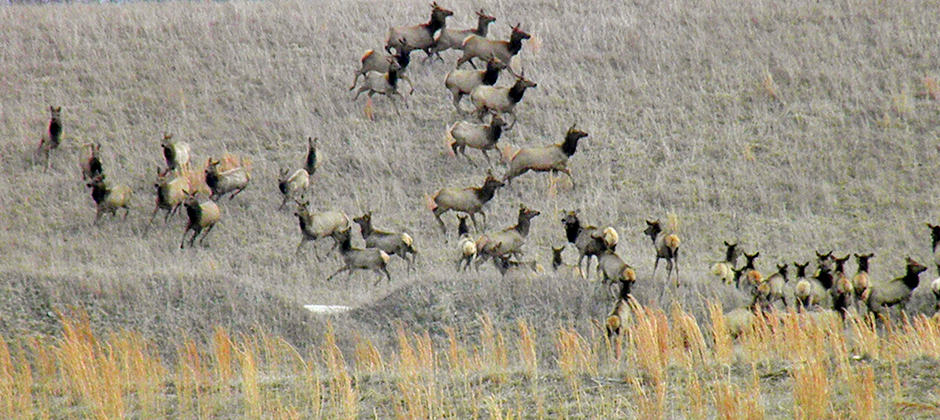Share this article
JWM: Kentucky success provides recipe for elk reintroduction
Kentucky may have discovered the recipe for success when it set out to reintroduce elk to the state about 20 years ago, researchers found. The state brought in a large number of animals from herds throughout several states to jumpstart the translocation effort and introduced them in waves.
“That approach has allowed its reintroduced elk population to be high not just in number but also in genetic diversity,” said Jordan Youngmann, the lead author on a paper published in the Journal of Wildlife Management that examined the genetic characteristics of Kentucky’s reintroduced elk.
“We found that overall, the Kentucky population is doing well in terms of genetic health,” said Youngmann, a TWS member and who conducted the research as a graduate research assistant at Mississippi State University. “It’s a really good sign. There are other instances in the eastern U.S. where there are restored elk herds, but those populations tend to be genetically bottlenecked.”
Elk (Cervus canadensis) once roamed throughout much of the East before unregulated hunting and habitat destruction wiped them out east of the Mississippi River. According to the U.S. Fish and Wildlife Service, by 1880 the eastern elk (C.c. canadensis) was extinct.
Some states, like Pennsylvania and Michigan, set about translocating elk from western populations early in the 20th century. Others, including Arkansas, Wisconsin and Virginia, began reintroduction efforts much later, spurred on by the popularity of the animal among hunters.
Kentucky embarked on its reintroduction program between December 1997 and March 2002. It brought in over 1,500 wild elk, captured in several states in the West and Great Plains.
“Fifteen hundred individuals is far more than any other reintroduction program for elk to date,” Youngmann said. Many of the reintroduced elk came from Utah, but others were captured in Kansas, Oregon, North Dakota, Arizona and New Mexico. The elk were released into 16 counties in southeastern Kentucky — a region comprising about 4.1 million acres — where a more rural landscape and smaller human population was expected to lessen the risk of human-wildlife conflicts.
By 2018, the Kentucky Department of Fish and Wildlife Resources estimated the elk population had grown to 13,106.
“That’s a huge population,” Youngmann said, “the largest of any reintroduced elk herd east of the Mississippi by far.”
While biologists knew the population was large, genetic analysis conducted by the researchers shone a light on the robust health of the group: genetic diversity was high, too.
Because more than half of the translocated elk came from Utah, genetics from those animals were more apparent in Kentucky than those from other areas, but researchers also found evidence of other stock sources within the Kentucky elk herd and that elk have moved and bred naturally among release sites. This may have allowed Kentucky’s reintroduced elk to avoid the genetic bottlenecks that other eastern states have seen.
Past studies have questioned whether translocating a large number of animals from multiple sources, had any real effect on elk reintroduction, Youngmann said. “Kentucky’s success suggests that it does,” he said, “Perhaps because it used so many more animals — and from a broader range of sources — than other efforts.”
The combination of using a large number of individuals, repeated releases and multiple stock source may provide a recipe for successful elk reintroduction in other states, Youngmann said. “This method allows wildlife managers to not put all of their eggs in one basket,” he said.
“The takeaway to some degree is, if you’re going to go through all the effort to reintroduce a species, you might as well use every tool available to you,” Youngmann said.
Header Image: Kentucky’s reintroduced elk population has grown from 1,500 to over 13,000. ©Carol Vinzant








